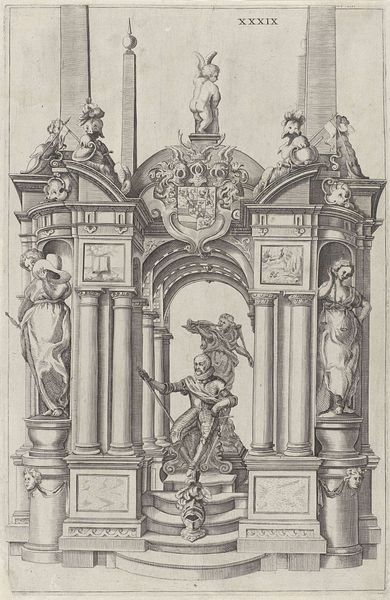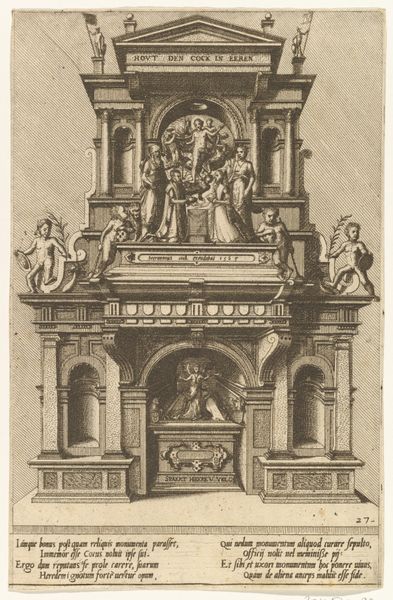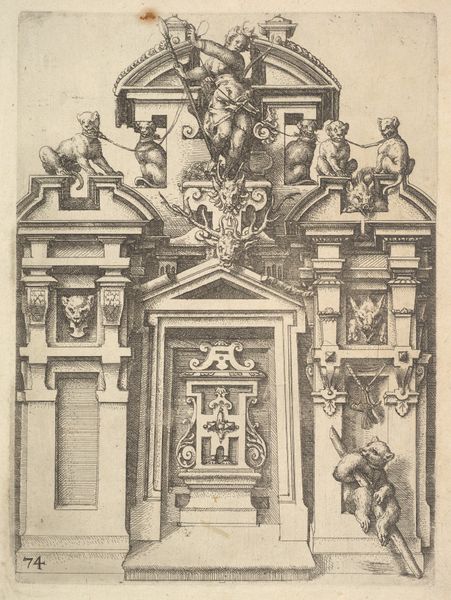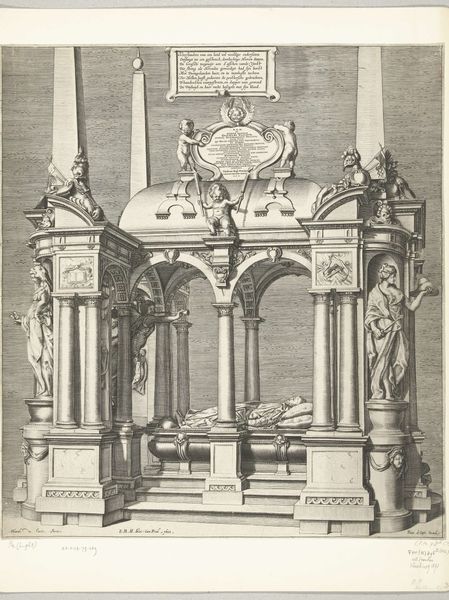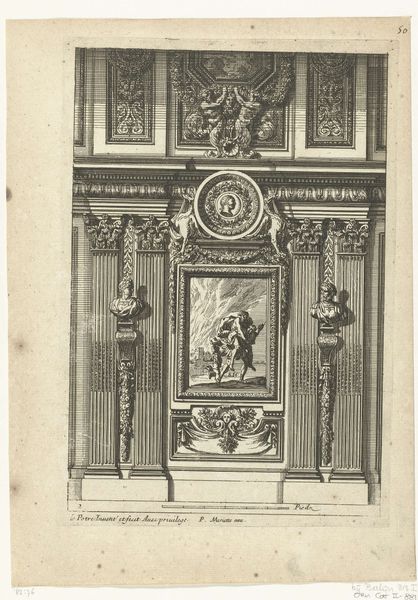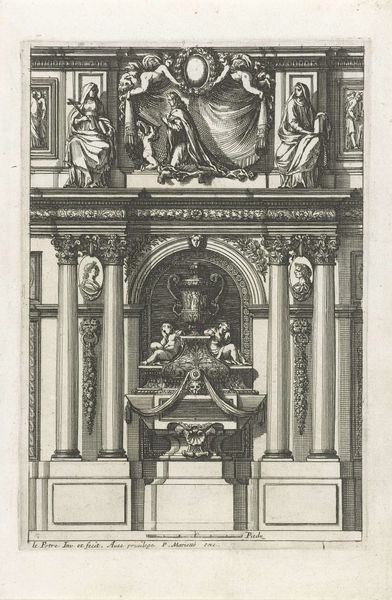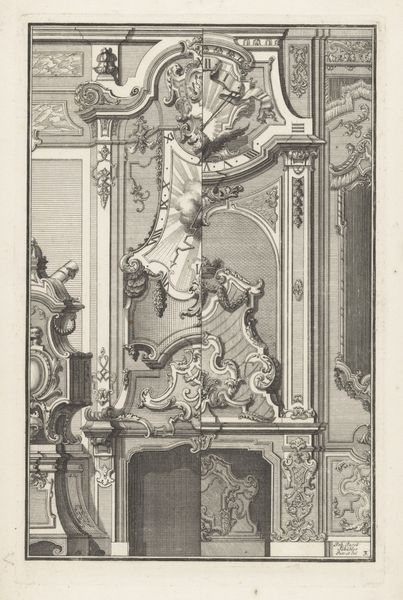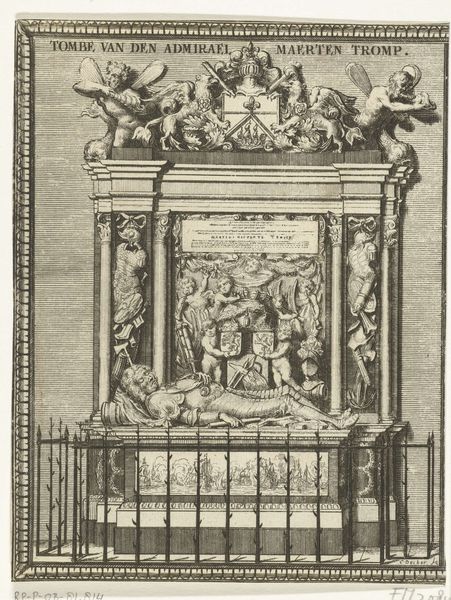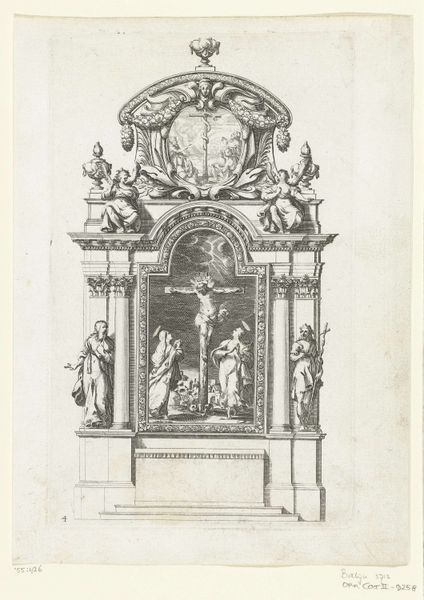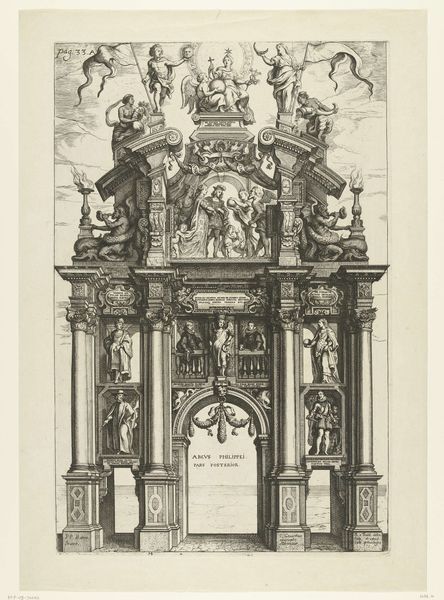
print, engraving, architecture
#
portrait
#
baroque
# print
#
old engraving style
#
history-painting
#
engraving
#
architecture
Dimensions: height 532 mm, width 372 mm
Copyright: Rijks Museum: Open Domain
Curator: At first glance, this engraving gives me a rather solemn, grand feeling. The figure at the centre seems heroic, though I admit the monochrome palette softens what could have been a more bombastic effect. Editor: Indeed. This is a print from 1622, titled "Graftombe van Willem I, prins van Oranje", meaning "Tomb of William I, Prince of Orange." Its origin speaks volumes; Prints like this circulated widely, shaping public memory and legitimizing power. It acted as propaganda. Curator: Propaganda as art, in other words. I’m curious about the material aspect; the fine lines, the texture achieved solely through variations in hatching… it’s technically impressive, especially considering the complexity of the architecture. Were prints like these commonly commissioned by the elites? Editor: Absolutely. This wasn’t just about aesthetics; it was about control. The deliberate crafting and wide distribution of this image meant the rulers shaped the narrative surrounding William’s legacy. It was a public declaration. Curator: The detail is astonishing. I wonder, what materials and labor were involved in producing these prints and ensuring their wide distribution? Editor: Excellent question. We would need to analyze the paper itself, identify the specific inks used, and explore the economics of printmaking workshops at the time. This involved multiple layers of production from artisans to merchants, distributing political ideology beyond elite circles. Curator: It seems more potent than a marble monument—a tomb existing only in this reproducible format! Editor: Exactly. That speaks volumes about the power dynamics and strategies employed to ensure William's story would resonate through generations, long after his death. Think of it as an early form of mass media influencing the public and embedding itself into the cultural identity. Curator: Well, I now feel much more equipped to grasp the historical significance surrounding what I initially perceived as merely a striking monochrome engraving. It’s like viewing a historical event etched onto paper. Editor: Precisely! Hopefully, listeners have now perceived that understanding an artwork demands scrutiny not only of the image itself, but also how society shaped both its production and lasting influence.
Comments
No comments
Be the first to comment and join the conversation on the ultimate creative platform.
